Oil and natural gas have been integral to the Iranian economy for decades, although the oil industry’s share of the overall economy has been declining since the mid-1990s. Oil production and exports have suffered from international sanctions. Meanwhile, domestic oil consumption has consistently increased since 1980 – posing a potential supply problem for Iran in the years to come. Natural gas production has increased as well, although it has generally matched rising consumption levels. Iran’s proved reserves of natural gas have grown since 1980, helping it rise among world rankings of natural gas producers.
- Oil Exports: Increased to about 2 million barrels a day following the end of the Iran-Iraq War, but dropped precipitously after new international sanctions were introduced in 2010.
- Oil Production: As low as 1.4 million barrels per day in 1981, and as high as 4.2 million barrels in 2011.
- Oil Consumption: Has been generally increasing since 1980, peaking in 2008 at 1.98 million barrels a day.
- Oil Economy: The oil industry accounted for only 10 percent of total GDP in 2014, a 34-year low.
- Natural Gas Production: Has been increasing since 1980, from a low of 210 billion cubic feet in 1981 to a high of 5,696 billion cubic feet in 2012.
- Natural Gas Consumption: Increased from 232 billion cubic feet in 1980 to 5,556 billion cubic feet in 2012, growing in tandem with production.
- Natural Gas Reserves: Iran’s proved reserves of natural gas have more than doubled since 1980, from 490 trillion cubic feet to 1,201 trillion cubic feet in 2014.
- Natural Gas Ranking: Iran has climbed the world ranking of natural gas producers since 1980, from 21st in the world to third in 2013.
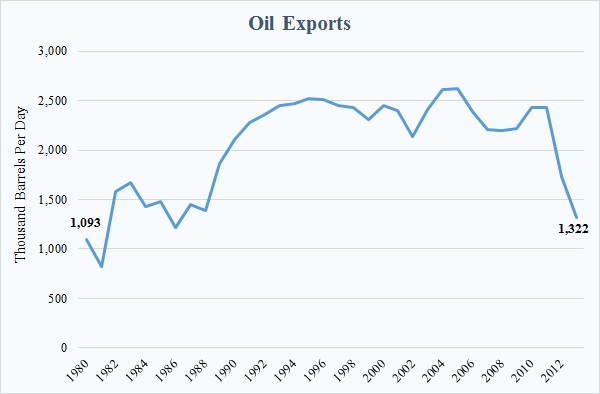
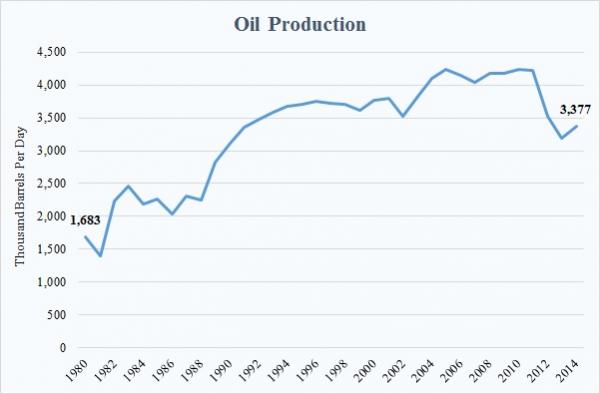
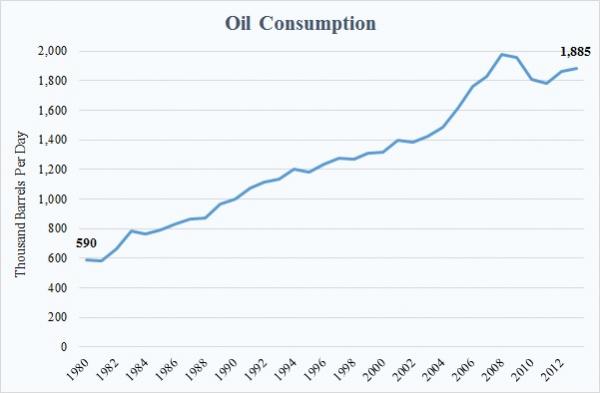

*The data begins on the Persian New Year, which falls in March of the Gregorian calendar.
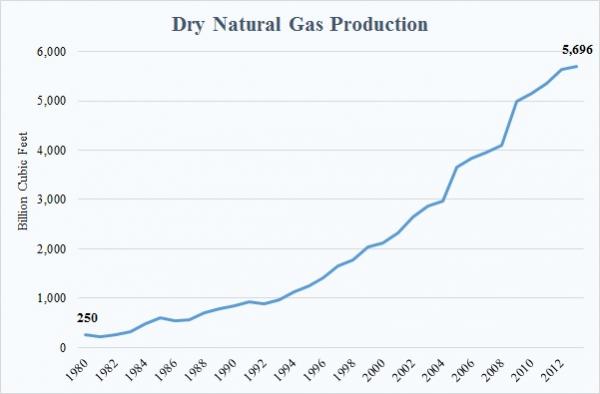
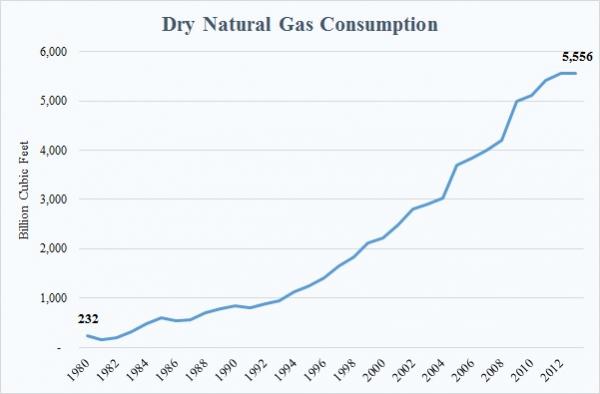
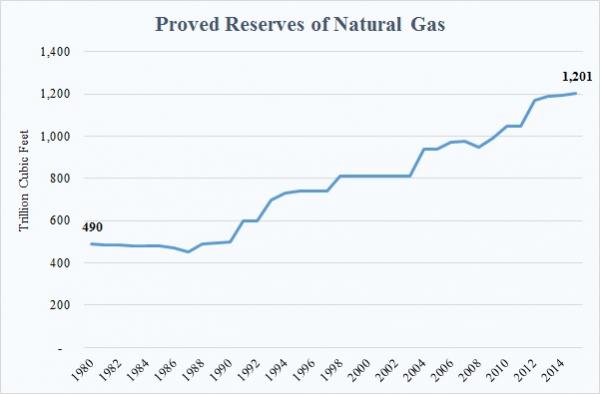
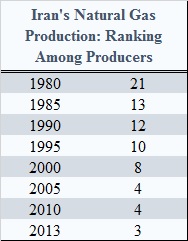
*Annual data on Iran’s rankings from 1980-2013 available from the EIA.
Katayoun Kishi is a research assistant at the U.S. Institute of Peace.
